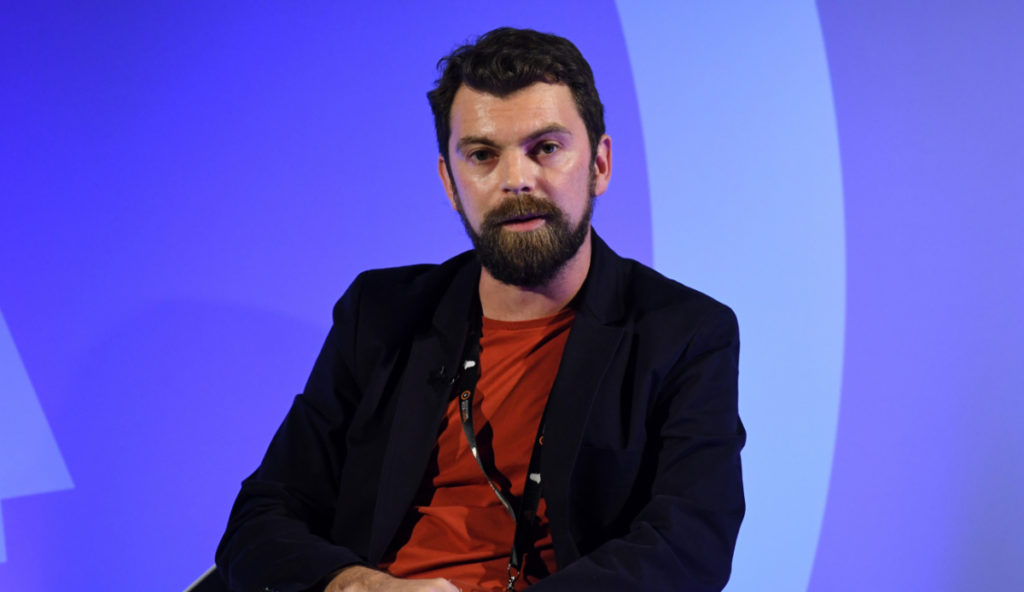By Luc Benyon, freelance Creative Marketing Strategist
Visual differentiation should be top of the adtech agenda.
Saccharine colours fizzle across your screen. Expanding and contracting grids stretch and squeeze bizarre letterforms. No, you’re not staring at the latest Lumascape, far from it; it’s the new visual brand identity for creative optimisation platform Celtra.
Let’s face it, adtech brands’ visual identities tend to be homogenous, predictable, and… yes, boring. But a few outliers are making a case for a more dynamic approach to branding. At the moment these are exceptions that prove the rule, but could that be about to change?
A visual identity performs a number of functions. It should be immediately recognisable and give the company a way to convey what they do implicitly. Perhaps most importantly, it should distinguish one brand from another. In a sector like adtech, where even the most seasoned professionals struggle to keep up with what exactly all the different platforms, solutions or vendors do, differentiation should be top of the agenda. But take a look around, It’s not.
Flat design, abstract shapes, sans serif logos, and blue – so much blue! – adtech is a sea of sameness. Furthermore, these brands tell us next-to-nothing about what a company actually does.
But the snazzy new Celtra visuals are all in service of their core offering and product: creative automation. With ‘creative’ itself as their key proposition, it makes sense to lean into this aspect and let the branding explain the product. In its use of morphing shapes, the identity itself communicates the act of iterating display ad units. And the bespoke – fun – typeface, and illustrations tell us that this is no ordinary brand, it’s something you want to know more about.
Celtra isn’t alone. There is a precedent in the branding for Magnite, formed in 2019 from Rubicon Project and Telaria. In their previous guises, Rubicon Project and Telaria were guilty of some of the worst blanding out there. But Magnite understood the need for distinction, and launched with a flurry of colourful marbled visuals, with a goal of communicating the brand’s message of ‘coming together’. This message is presumably also the motivation behind the name, which is inspired by the mineral ‘magnetite’, and its ‘magnetic’ qualities.
What’s most pleasing about the Magnite rebrand is that it stretches beyond just the visual and into the written word. This is pure adtech brand, actually making jokes.
Notably, both Celtra and Magnite retained traditional sans-serif fonts for their logos (although there is some innovation to be seen in Magnite’s ‘M’ and ‘g’). This trope has become something of an in-joke among designers for technology companies. and has even begun to influence other sectors (in fashion, for example, rebrands for Burberry, Gucci, Hermes, Prada and Saint Laurent have rendered them almost indistinguishable).
Celtra’s use of under-the-radar Slovenian design studio Ljudje got the wider design community excited (not something often said of an adtech brand). But the Magnite brand was created by one of the branding world’s most respected studios: Collins. Collins have been pushing technology brands to be braver in their choices for a while, with rebrands for the likes of Mailchimp, Spotify and Dropbox in their portfolio.
Mailchimp sets its sites on start-ups and entrepreneurs, giving them an audience expecting a more ‘playful’ identity. And Spotify are a B2C brand in the entertainment space – creativity is in their blood. Dropbox have risen to the challenge set by fellow cloud file transfer solution WeTransfer, in targeting creative professionals with their visual brand, a content marketing approach.
But B2B brands, whether they identify as adtech, martech or Saas, also need to understand the imperative for distinguishing themselves from competitors. Right now is the moment to do it – the landscape is bare, but the change has begun.
Distinctiveness can be created visually but needs to extend to tone of voice, user experience, use of media, and wider brand behaviour. It takes bravery to be different. And it takes consistency over time to be remembered.
Distinctiveness is going to be key to creating a more understandable adtech landscape and to be recognised for doing something different. It’s time for identi-brands to discard category conventions. Because the competition are about to do it too.









